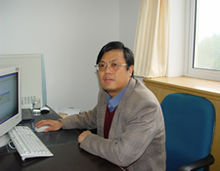Speaker:Deshuang Huang
Title:Graph Representation Learning
Time:11:00 am,December 5,2021(Sunday)
Venue:Nanjiao 114

Personal Introduction
Deshuang Huang, Ph.D., professor and doctoral supervisor of Tongji University, Adjunct professor and doctoral supervisor of University of Science and Technology of China, IEEE Fellow, INTERNATIONAL Pattern Recognition Society (IAPR) Fellow, selected member of Hundred Talents Plan of Chinese Academy of Sciences in 2000, vice chairman of Bioinformatics Committee of Chinese Computer Society. He has been engaged in the research of neural network, pattern recognition and bioinformatics for a long time. He has published more than 230 SCI papers in domestic and foreign academic journals with H factor 73. He has won 1 first prize of Natural Science of Ministry of Education and Anhui Province, and 1 first prize of Science and Technology Progress of Artificial Intelligence Society. As the chief expert of the national Science and Technology Innovation 2030 -- a new generation of artificial intelligence major project Research on new Neural network Model for Complex Data Processing; He is on the editorial board of IEEE/ACM Transactions on Computational Biology & Bioinformatics.
Abstract:
Graph Neural Networks (GNN) have achieved advanced performance in many fields such as traffic prediction, recommendation systems, and computer vision. Recently there are majorities of methods on GNN focusing on graph convolution, and less work about pooling. Existing graph pooling methods mostly are based on Top-k node selection, in which unselected nodes will be directly discarded, caused the loss of feature information. In that case, we propose a novel graph pooling operator called Hierarchical Graph Pooling with Self- Adaptive Cluster Aggregation (HGP-SACA), which uses a sparse and differentiable method to capture the graph structure. Before using top-k for cluster selection, the unselected clusters are aggregated by an n-hop, and the merged clusters are used for top-k selection, so that the merged clusters can contain neighborhood clusters enhancing the function of the unselected cluster. This can enhance the function of the unselected cluster. Through extensive theoretical analysis and experimental verification on multiple datasets, our experimental results show that combining the existing GNN architecture with HGP-SACA can achieve state-of-the-art results on multiple graph classification benchmarks, which proves the effectiveness of our proposed model. Besides, we are also interested in dynamic graphs. This kind of graph that changes over time is currently rarely studied. we leave this as future work. Finally, some new research problems in this aspect will be pointed out and over-reviewed.